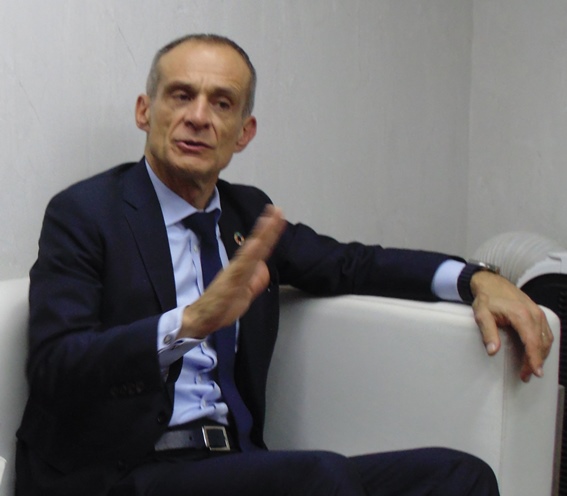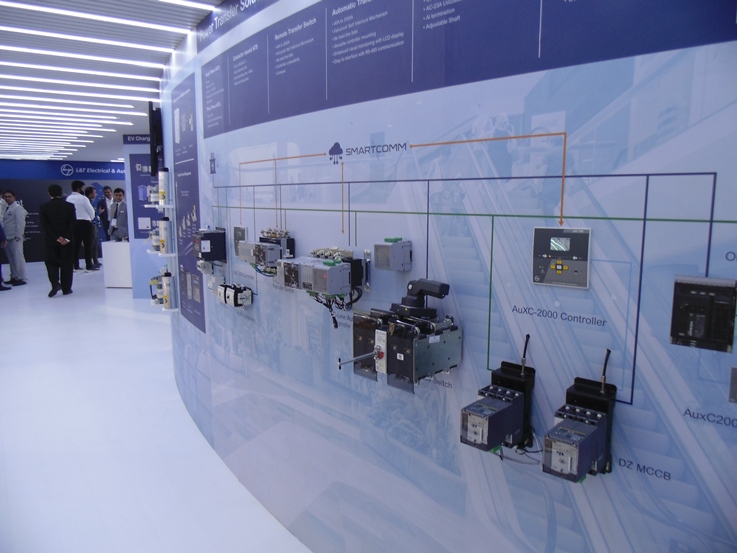The acquisition of the Electrical & Automation (E&A) business of Larsen & Toubro (L&T) by Schneider Electric is a very significant development for the French-headquartered company, according to Jean-Pascal Tricoire, Chairman & CEO, of Schneider Electric. Tricoire was interacting with the media during Elecrama 2023.

Tricoire noted that in the initial years of Schneider Electric in India, the company did undertake some acquisitions. However, much of the company’s growth in India has been organic – building new factories, recruiting and training people, developing R&D competence, etc. It has been mostly green development for Schneider Electric in India till 2020 – the year when the agreement with L&T-E&A was signed, Tricoire observed, adding that the acquisition of L&T-E&A was a significant development for Schneider Electric.
The Chairman & CEO shared some interesting aspects and arcane information about the deal. As Tricoire pointed out, talks between Schneider Electric and L&T were in progress for the past twenty years – since the time Jean-Pascal Tricoire took over as CEO of Schneider Electric. Incidentally, Tricoire has been with the company for over 34 years, of which 20 years as CEO.
“L&T for me has always been a reference. You could say that L&T has been the Schneider of India. We have always had a lot of mutual respect between companies. On the turf, we were competing — but with respect,” was how Tricoire summarized the corporate equations between the two entities. Interestingly, much of the discussion between the two companies leading up to the acquisition pivoted on how the cultures of the two companies would blend, Tricoire said.
Elaborating on the acquisition, the Chairman & CEO of Schneider Electric said that “L&T” would be retained as a separate brand. For all practical purposes, the companies would exist independently; effectively, it is just the ownership of L&T-E&A that would undergo a change. This also explains why, at Elecrama 2023, not only did L&T-Electrical & Automation and Schneider Electric have separate booths, the L&T-E&A booth had no overarching branding of “Schneider Electric”
Dwelling more on the subject, Tricoire generally observed that L&T – in terms of its E&A products — was strictly not on the same part of the market as Schneider Electric. “The two do not have the same line of products but we had the same vision of the market. We should be complementing each other as we go further,” Tricoire explained.
Specifically, in the field of energy meters, Tricoire observed that though both entities have a significant presence in the field, the types of meters are different. “The meters that L&T makes will complement the array of Schneider Electric.”
Both the companies were rich in terms of brand value, R&D competence and work culture, the CEO said, adding that Schneider Electric would like to retain the legacy of both companies. There would be competition between the two entities, Tricoire noted, explaining that the competition would largely be on devising different ways of doing things.
Both the companies share a common business spirit, Jean-Pascal Tricoire averred. “There is a lot of innovation taking place between the two because we both belong to the same space, and we are passionate about the space.”
Also read: Schneider Electric Sees Acquisition Of L&T-E&A As A Big Strength
Energy-efficient buildings: A major business driver
Jean-Pascal Tricoire, Chairman & CEO, of Schneider Electric, observed that making buildings energy-efficient would be a big business driver for Schneider Electric in India. He said that over the next 25 years, the square footage of buildings in India will be at least six times what it is currently, thanks to rapid urbanization. “No other country will have such growth.” China had perhaps evinced such growth in the 1990s, and now it is India, he said.
Tricoire estimated that buildings account for as much as 40 per cent of total energy consumption, and would therefore present a huge canvas for energy efficiency measures. “It is absolutely essential to have buildings that are energy-efficient. Otherwise, it is going to be an energy pollution disaster. Buildings account for 40 per cent of energy consumption. Imagine the huge difference if we build those buildings green from the beginning,” was how Tricoire put forth his point.
When it comes to bringing energy efficiency to buildings, the size of the problem – which can be construed as the size of the business opportunity – was really huge, Tricoire said.
Currently, around 35 per cent of Schneider Electric India’s business comes from buildings, 15 per cent from information technology (data centres), 40 per cent from industry and 10 per cent from smart cities.
Schneider Electric, therefore, has a big opportunity in improving the energy system, tackling the entire space from buildings to industry, to data centres, to cities. Thanks to the digitization of the electricity value chain, everything will be connected right from the power generation plant to the plug point, Tricoire foresaw.
Featured photograph shows L&T-E&A’s booth at Elecrama 2023 (Photo: T&D India)



